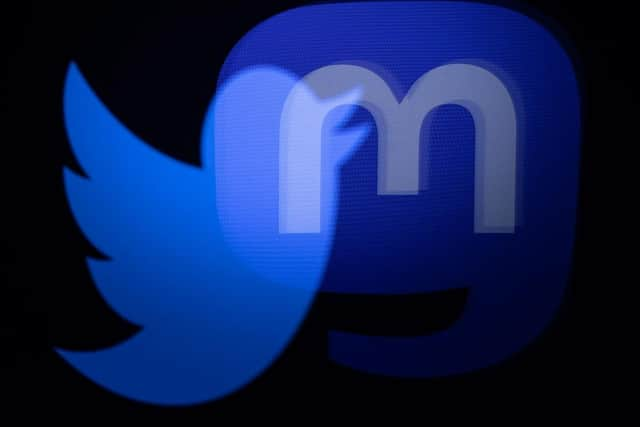Mastodon social media: What is Mastodon, how does it work, is it free and why are people leaving Twitter for it?
On April 27, 2022, 30,000 new users took to Mastodon following the news that Elon Musk would be buying Twitter. A day later the site launched the European Data Protection Supervisor (EDPS). This is an independent supervisory authority with a purpose to monitor and make sure that European institutions and bodies respect the right to privacy and data protection when processing personal data and develop new policies.
The Mastodon mascot is an animal with a trunk, akin to a mastodon or mammoth. Messages posted using the software are called ‘toots’ and the site was originally created by Eugen Rochko.
Advertisement
Hide AdAdvertisement
Hide AdFollowing Elon Musk’s acquisition of Twitter on October 27, 2022, it was revealed that an additional 70,000 new users joined Mastodon.
What is Mastodon and is it free?
It is an open-source software for federated microblogging, which anyone can use and contribute code to, and which anyone can run on their own server infrastructure or join servers run by others within the Fediverse (federated servers used for web publishing) network.
The server side of the technology is powered by Ruby on Rails and Node.js whilst the front end is written in React.js and Redux. The database software is PostgreSQL.
The free software was first established in October 2016 and has microblogging features similar to Twitter which are offered by a large number of independently run Mastodon nodes, in technical terms these are known as ‘instances’, each with its own code of conduct, terms of service, privacy options and moderation policies.
Advertisement
Hide AdAdvertisement
Hide Ad

How does Mastodon work?
Mastodon servers run social networking software with the ability to communicate using the ActivityPub standard, which has been applied since its 1.6 version and users can interact with other users on any other servers in the Fediverse that supports ActivityPub.
Since its 2.9.0 version, Mastodon offers a single column mode for new users by default and the system is similar to microblogging on TweetDeck. Users post short-form status messages for others to see. A standard Mastodon instance allows users to post messages of up to 500 characters, which is considerably more than Twitter’s 280 character limit.
Why people are leaving Twitter for Mastodon - Twitter controversy
Elon Musk successfully purchased Twitter for $44 billion (£38,989,809,482) on October 27, 2022 and he immediately fired the top three Twitter executives.
A week later, he started to lay off around half of the company’s employees (roughly around 7,500 staff).
Advertisement
Hide AdAdvertisement
Hide AdWhen he first began speaking about his intentions of buying Twitter, he stated that he had concerns with the company’s commitment to ‘free speech’ and whether Twitter’s moderation policies were compromising democracy. He then planned big changes to Twitter’s treatment of spammers and trolls, a softer approach to the content moderation policy and revamped its offered services and cut costs.
The week following his acquisition of Twitter, Elon revamped Twitter Blue, increasing its price to $8 (£6.98) per month and added new features, including the ‘blue checkmark’ verification that had previously been reserved for high-profile confirmed users. This change was criticised by several outlets who expressed fears that it could increase the spread of misinformation as there would be no filter in place to monitor who is verified through Twitter Blue.
He chose to delay these changes until after the 2022 midterm elections in the US due to these concerns and announced that faking identities, outside of parody accounts, would be ‘permanently suspended’.
Comment Guidelines
National World encourages reader discussion on our stories. User feedback, insights and back-and-forth exchanges add a rich layer of context to reporting. Please review our Community Guidelines before commenting.
